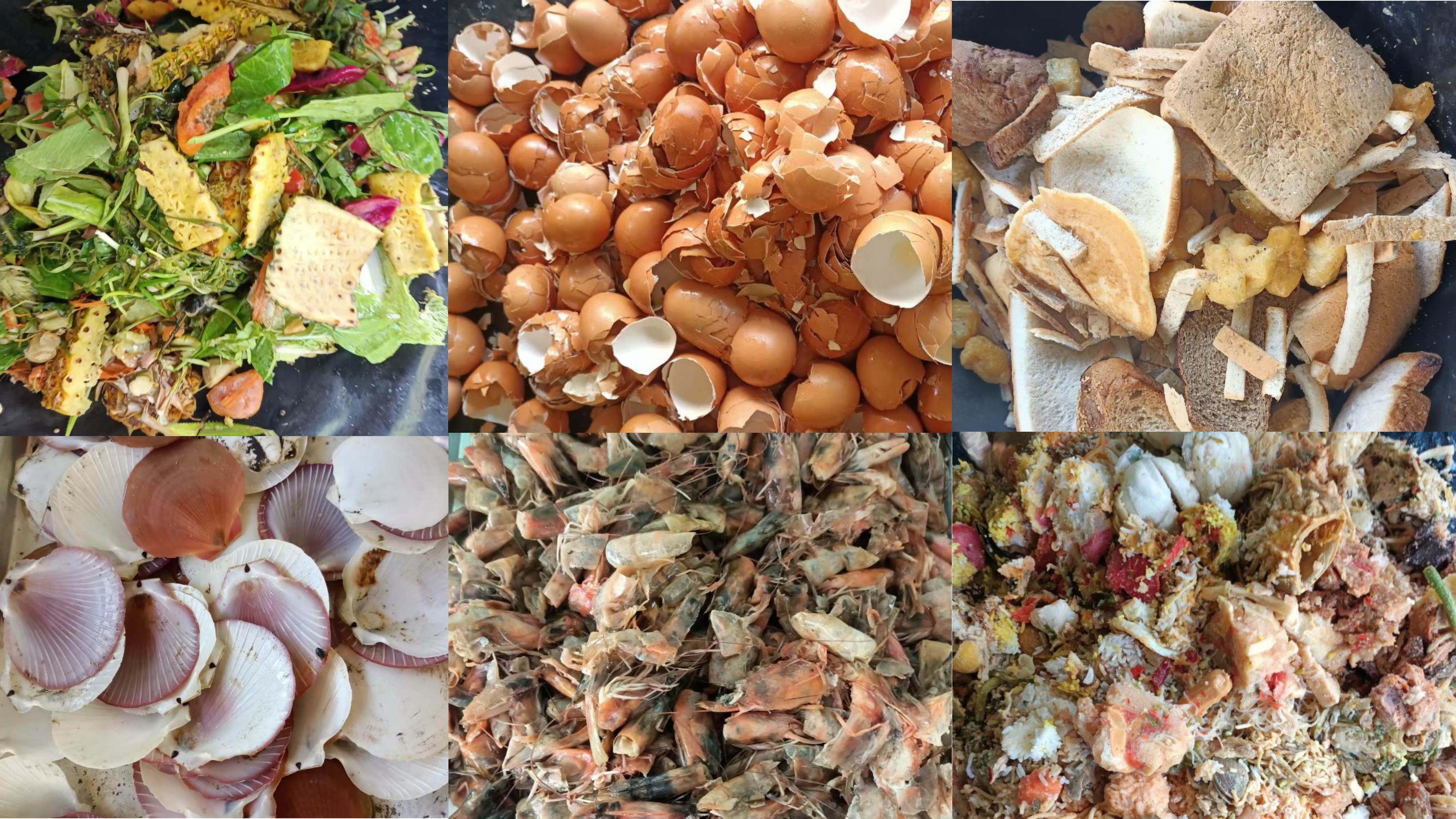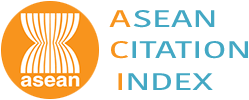Quantity, Cost and Environmental Impacts of Food Waste Landfilling in Cha-Am Municipality, Phetchaburi Province and Hua Hin Municipality, Prachuap Khiri Khan Province
Keywords:
food waste, quantity, management costs, environmental impactsAbstract
Background and Objectives: Food waste is a significant global issue, negatively impacting environment, economic, and society. It contributes significantly to climate change, resource depletion, and food insecurity. Globally, the tourism sector is responsible for approximately 8% of total greenhouse gas emissions. However, this estimate does not fully account for emissions stemming from food waste generated by tourism-related activities and businesses (industries), which are often overlooked in mainstream assessments. The tourism sector—encompassing restaurants, hotels and accommodations, markets, and food retail—generates substantial volumes of food waste due to high consumption patterns and service expectations. Managing this waste requires significant inputs, such as fossil fuels for collection and transportation of the waste, as well as infrastructure for treatment or landfilling. In particular, landfilling food waste, which is rich in organic material, leads to the release of methane and other harmful pollutants, contributing further to environmental degradation. Despite its relevance, there remains a limited understanding of the actual quantity of food waste, its management costs, and environmental impacts within tourism-dependent regions. To address this gap, the present study investigates the scale and nature of food waste generated by the tourism and its associated industries in Cha-am and Hua Hin municipalities. It also evaluates the financial and environmental implications of landfill-based food waste management systems in these areas.
Methodology: To assess the food waste situation in Cha-am and Hua Hin municipalities, data were collected from a range of sources associated with the tourism and its associated industries. These included sample restaurants and food services, hotels and accommodations, fresh markets, and retailers, covering the period from August 2021 to July 2022. The quantities of food waste generated were recorded and analyzed to determine the average production rate (kilogram/day) according to the type and size of each business. This production rate was then extrapolated to estimate total food waste generation in each business category by multiplying it by the total number of such establishments within the municipalities. For economic evaluation, the cost of managing food waste through landfill disposal was analyzed using the direct allocation method (DAM), which apportions management costs to specific sources. In parallel, environmental impacts were assessed using the Life Cycle Assessment (LCA) methodology, which considers the full range of emissions and resource use associated with landfill-based food waste management processes.
Main Results: The quantities of food waste from the tourism and related industries in Cha-am Municipality was 2,516.37 tons per year, accounting for 8.00% of the total collectable municipal solid waste. In Hua Hin Municipality, the amount of food waste was 3,844.25 tons per year, representing 7.88% of the total collectable waste. Post-consumed (left-over) food waste from restaurants and food services constituted the major source of food waste, accounting for 25.02% and 26.57% of total food waste from restaurants and food services in Cha-am and Hua Hin municipalities, respectively. The total cost of food waste management in Cha-am Municipality was 1,290.73 THB per ton, constituting cost of collection and transport food waste of 857.77 THB (66.38% of total cost) and cost of waste landfilling of 433.96 (33.62% of total cost), while in Hua Hin Municipality, it was 2,585.42 THB per ton, constituting 1,883.71 THB for waste collection and transport (72.86% of total cost) and 701.71 THB for waste landfilling (27.14% of total cost). Variable cost is the major component, accounting for 94.52% and 99.91% of total cost for Cha-am and Hua Hin municipalities, respectively. Environmental emissions stemming from food waste collecting and from landfilling processes influence differently to environmental impact indicators. The waste collecting process largely influenced 3 out of 11 environmental indicators, namely Particulate Matter, Freshwater Eutrophication Potential and Terrestrial Eutrophication Potential. These impact indicators were contributed by use of fossil fuels. The landfilling process (landfill-gas and leachate) had considerable impacts on 6 out of 11 environmental indicators, i.e., Climate Change, Ozone Depletion Potential, Non-cancer, Cancer, Photochemical Ozone Formation Potential and Ecotoxicity for Freshwater Ecosystem. Landfill-gases and leachate were sources of emissions contributing to these impact indicators. Both processes contributed equally to 2 out of 11 environmental indicators, namely Acidification Potential and Marine Eutrophication Potential.
Conclusions: The tourism sector, along with its associated industries, played a major role in generating significant quantities of food waste in the Cha-am and Hua Hin municipalities. The current reliance on landfill-based food waste management imposed substantial financial burdens and contributes to serious environmental issues, including greenhouse gas emissions and leachate contamination. To enhance sustainability and mitigate these negative impacts, key strategies include optimizing the food waste collection process by reducing dependence on fossil fuels and incorporating renewable energy sources. Additionally, increasing the efficiency of landfill gas and leachate management offers considerable potential. Capturing methane emissions and converting them into electricity not only reduces emissions but also provides a renewable energy source. Furthermore, implementing advanced systems to treat or prevent leachate contamination can protect ecosystems. These integrated solutions support more sustainable and resilient waste management systems in both municipalities.
References
Alexander, A., Burklin, C., & Singleton, A. (2005). Landfill Gas Emissions Model (LandGEM) Version 3.02 User’s Guide.
Anh, L.H., Thanh, T.N., Tuyen, N.T.K., Bang, H.Q., Son, N.P., Schneider, P., Lee, B.K., & Moustakas, K. (2002). Site-specific determination of methane generation potential and estimation of landfill gas emissions from municipal solid waste landfill: a case study in Nam Binh Duong, Vietnam. Biomass Conversion and Biorefinery, 12, 3491–3502.
Banar, M., Cokaygil, Z., & Ozkan, A. (2009). Life cycle assessment of solid waste management options for Eskisehir, Turkey. Waste Management, 29, 54–62.
Batool, F., Kurniawan, T.A., Mohyuddin, A., Othman, M.H.D., Aziz, F., Al-Hazmi, E.H., Goh, H.H., & Anouzla, A. (2024). Environmental impacts of food waste management technologies: A critical review of life cycle assessment (LCA) studies. Trends in Food Science & Technology ,143, 104287.
Bovea, M. D., & Powell, J. C. (2006). Alternative scenarios to meet the demands of sustainable waste management. Journal of Environmental Management, 79, 115-132.
da Silva, N.F., Schoeler, G.P., Lourenço, V.A., deSouza, P.L., Caballero, C.B., Salamoni, R.H., & Romano, R.F. (2020). First order models to estimate methane generation in landfill: a case study in south Brazil. Journal of Environmental Chemical Engineering, 8, 104053.
ecoinvent Centre. (2018). ecoinvent data v3.4. Swiss Centre for Life Cycle Inventories, St. Gallen.
Emkes, H., Coulon, F., & Wagland, S. (2015). A decision support tool for landfill methane generation and gas collection. Waste Management, 43, 307-318.
Fallahizadeh, S., Rahmatinia, M., Mohammadi, Z., Vaezzadeh, M., Tajamiri, A., & Soleimani, H. (2019). Estimation of methane gas by LandGEM model from Yasuj municipal solid waste landfill Iran. MethodsX, 6, 391-398.
Filimonau, V., & Uddin, R. (2021). Food waste management in chain-affiliated and independent consumers’ places: A preliminary and exploratory study. Journal of Cleaner Production, 319, 128721.
Food SCP RT. (2013). ENVIFOOD Protocol, Environmental Assessment of Food and Drink Protocol. European Food Sustainable Consumption and Production Round Table (SCP RT), Working Group 1, Brussels, Belgium.
International Organization for Standardization. (2006a). ISO 14040: Environmental management—Life cycle assessment—Principles and framework. International Organization for Standardization, Geneve
International Organization for Standardization. (2006b). ISO 14044: Environmental management—Life cycle assessment—Requirements and guidelines. International Organization for Standardization, Geneve.
IPCC (Intergovernmental Panel on Climate Change). (2006). Chapter 11: N2O emissions from managed soils, and CO2 emissions from lime and urea application. In H.S. Eggleston, L. Buendia, K. Miwa, T. Ngara, & K. Tanabe (Eds), 2006 IPCC Guidelines for National Greenhouse Gas Inventories: Volume 4 Agriculture, Forestry and Other Land Use Global Environmental Strategies, Kanagawa, Japan.
IPCC (Intergovernmental Panel on Climate Change). 2013. The Physical Science Basis. Contribution of Working Group I to the Fifth Assessment Report of the Intergovernmental Panel on Climate Change, Cambridge University Press, USA.
Isuwan, A., Promchan, T., & Chobtang, J. (2024). Quantity, chemical composition and utilization potential of food waste from restaurants and food services: a case in Cha-am town municipality area, Phetchaburi province, and Hua Hin town municipality area, Prachuap Khiri Khan province. Journal of Environmental and Sustainable Management, 20(1), 64–79. (in Thai)
Lenzen, M., Sun, Y.Y., Faturay, F., Ting, Y.P., Geschke, A., & Malik, A. (2018). The carbon footprint of global tourism. Nature Climate Change, 8, 522–528.
Manfredi, S., Niskanen, A., & Christensen, T.H. (2009). Environmental assessment of gas management options at the Old Ämmässuo landfill (Finland) by means of LCA-modeling (EASEWASTE). Waste Management, 29, 1588-1594.
Manfredi, S. Tonini, D., & Christensen, T.H. (2010). Contribution of individual waste fractions to the environmental impacts from landfilling of municipal solid waste. Waste Management, 30, 433-440.
Melikoglu, M., Lin, C.S.K., & Webb, C. (2013). Analysing global food waste problem: pinpointing the facts and estimating the energy content. Central European Journal of Engineering, 3, 157-164.
Moult, J. A., Allan, S. R., Hewitt, C. N., & Berners-Lee, M. (2018). Greenhouse gas emissions of food waste disposal options for UK retailers. Food Policy, 77, 50-58.
Pré Consultants. (2018). SimaPro 8.3 Life Cycle Assessment Software, Amersfoort, The Netherlands.
Ramprasad, C., Teja, H.C., Gowtham, V., & Vikas, V. (2022). Quantification of landfill gas emissions and energy production potential in Tirupati Municipal solid waste disposal site by LandGEM mathematical model. MethodsX, 9, 101869.
Sustainable Restaurant Association-SRA. (2010). Too Good to Waste: Restaurant Food Waste Survey Report SRA, London.
Thailand Development Research Institute. (2019). Study of appropriate food surplus management approaches to reduce food waste problems in Thailand. Final report. Thai Health Promotion Foundation. 108 p. (in Thai)
Tilman, D., & Clark, M. (2014). Global diets link environmental sustainability and human health. Nature, 515, 518–522.
Tilman, D., Balzer, C., Hill, J., & Befort, B.L. (2011). Global food demand and the sustainable intensification of agriculture. Proceedings of the National Academy of Sciences of the United States of America, 108, 20260–20264.
Wang, X. (2013). Using observed data to improve estimated methane collection from select U.S. landfills. Environmental Science & Technology, 47, 3251-3257.
Winnow. (2018). Addressing Food Waste in the Hospitality & Foodservice Sector. An Overview of Why and where Food Waste Happens Winnow Solutions, London.

Downloads
Published
How to Cite
Issue
Section
License
Copyright (c) 2025 Faculty of Science, Burapha University

This work is licensed under a Creative Commons Attribution-NonCommercial-NoDerivatives 4.0 International License.
Burapha Science Journal is licensed under a Creative Commons Attribution-NonCommercial-NoDerivatives 4.0 International (CC BY-NC-ND 4.0) licence, unless otherwise stated. Please read our Policies page for more information



